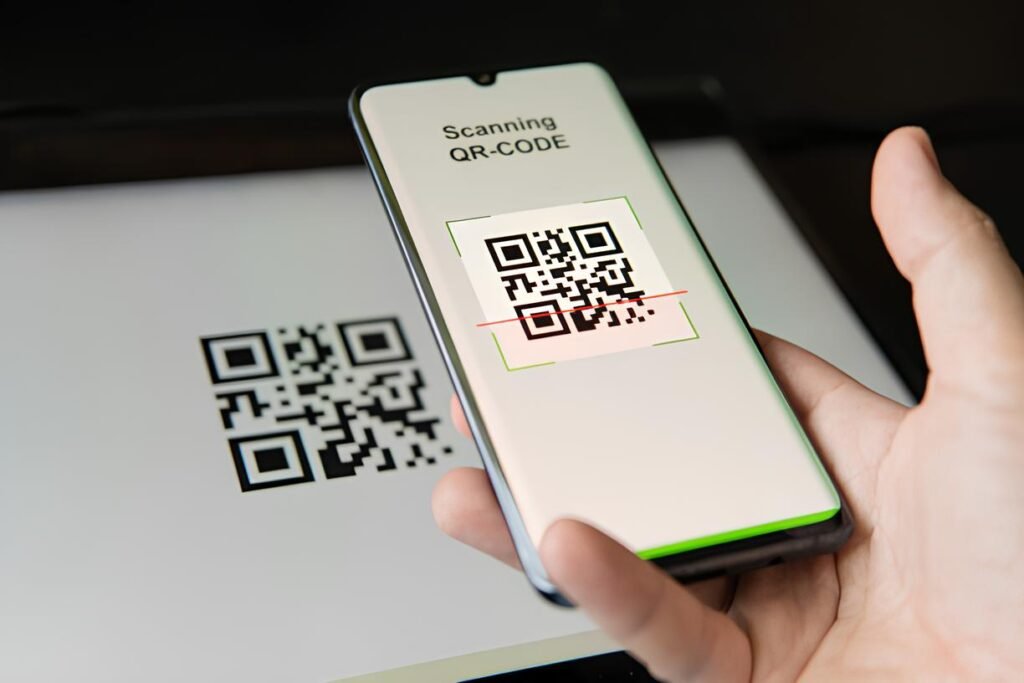Imagine you’ve just scanned a QR code to open your digital wallet and send some cryptocurrency. It’s quick, effortless, and feels like the future of secure payments. But beneath this seamless exchange lies a hidden risk—an invisible fingerprint littered across the layers of metadata that can quietly unravel your privacy. How can anyone balance the convenience of QR code-based wallets with the need to keep sensitive metadata under wraps?
In This Article
What Are QR Code-Based Wallets?
QR code-based wallets are digital payment tools that leverage QR codes to simplify crypto transactions. Instead of typing long wallet addresses, users scan a QR code that contains the recipient’s payment information. This rapid exchange reduces typo errors and makes sending or receiving funds as smooth as a tap.
These wallets come in various forms—from mobile apps to hardware wallets that display QR codes for offline signing. Their popularity is soaring because they blend usability with security, enabling transactions even on air-gapped devices.
Understanding Metadata Risks in Wallets
While the transaction amount and wallet addresses are often encrypted on the blockchain, the metadata surrounding these transfers isn’t as protected. Metadata is the “data about data”: it includes timestamps, IP addresses, device information, transaction sizes, and even usage patterns.
This seemingly harmless data can be collated to build profiles of users, track transaction behaviors, or identify wallet holders, cutting through the layers of cryptographic obfuscation.
Metadata can reveal your location, frequency of transactions, the type of apps you use, and even your device model—without exposing your wallet’s actual keys or transaction contents.
How QR Codes Can Reveal Metadata
QR codes themselves are just visual representations of data, but the process of generating, scanning, and processing these codes often leaks metadata in subtle ways:
- Location data: If your wallet app or camera accesses location services to timestamp or geo-tag the QR transaction, this info can leak.
- Timestamp logs: Scanned QR codes and transaction times are recorded, potentially tied to device IDs or IP addresses.
- Device fingerprints: The camera and app permissions used during scanning can broadcast device details to monitoring systems.
- Network metadata: If your device connects to a backend node or wallet service during a transaction, IP and routing info are exposed.
Even the act of scanning multiple QR codes through the same device or app can create usage patterns that threaten your anonymity.
Minimizing Metadata Exposure When Using QR Wallets
Reducing your metadata footprint requires a layered approach. Here are practical steps you can take when using QR code wallets:
- Use air-gapped wallets: Generate and sign transactions offline on devices never connected to the internet, scanning QR codes only for broadcasting signed transactions via a separate secure device.
- Disable location services: Turn off GPS and location permissions on wallets and camera apps that handle QR codes.
- Randomize transaction times: Avoid predictable transaction patterns by varying the timing and amounts of your transfers.
- Use privacy-focused network layers: Route wallet-related traffic through VPNs or tools like Tor to obscure your IP metadata.
- Clear app caches and logs: Regularly wipe transaction histories and cached data stored by your wallet and scanning apps.
If possible, use a dedicated camera app with minimal permissions just for QR scanning, instead of your default phone camera. This reduces data sharing with unrelated apps.
Privacy Tools and Best Practices
Beyond these basic precautions, a suite of privacy tools and strategies can bolster protection against metadata leaks:
- Multi-signature wallets: Using wallets that require multiple approvals obfuscates transaction origin and makes metadata analysis harder. Learn more about multi-signature wallets and privacy to deepen your defense.
- Temporary burner devices: For critical transactions, consider air-gapped or burner smartphones dedicated solely to wallet interactions.
- Metadata stripping tools: While commonly used for files, some apps can help clear residual metadata in mobile OS caches and QR code logs.
- Use encrypted messaging for code sharing: Exchange QR codes via secure, end-to-end encrypted chats to avoid exposing transaction data in less protected channels.
- Practice OpSec consistency: Avoid overlapping your wallet use with identifiable activities like social media or browsing to prevent identity linkage via correlation.
Metadata is a subtle adversary: it’s everywhere but often invisible. Yet the landscape is changing quickly. By staying vigilant and weaving these privacy techniques into daily wallet use, you can enjoy the instant convenience of QR code payments without handing over your footprint.
Continuous education on metadata is key. Our article on what blockchain metadata can reveal about you is a useful resource to deepen your understanding.
FAQ
Q: Are QR code-based wallets inherently less private?
A: Not necessarily. The QR code itself is just data transmission. Privacy depends on how it’s generated, scanned, and transmitted within your network and device environment.
Q: Can third parties track me through QR code transactions?
A: Yes. Without precautions, metadata such as timestamps, network addresses, and device information can be collected by observers or compromised services.
Q: How does using Tor or VPNs help?
A: Routing your transaction broadcasts or wallet-related app traffic through Tor or a trusted VPN helps mask your IP address and location, protecting a critical part of your metadata.
Q: Is using an air-gapped device mandatory?
A: For maximum privacy, yes. But for casual users, combining reduced permissions, clearing caches, and privacy network layers can still significantly limit metadata leaks.



